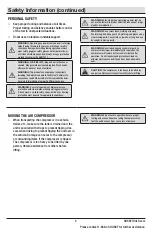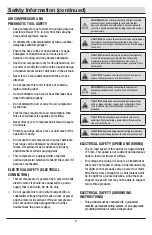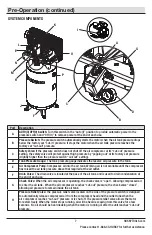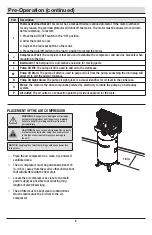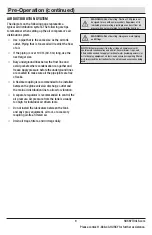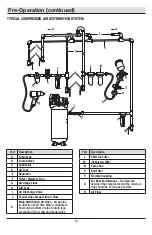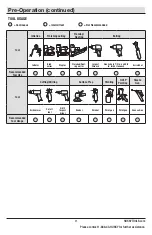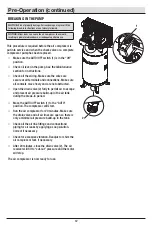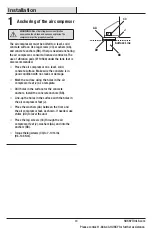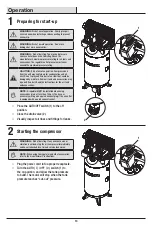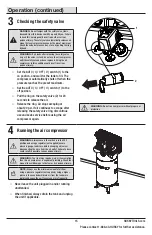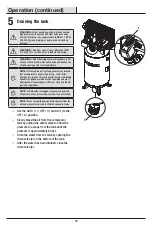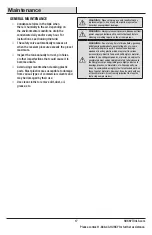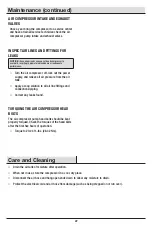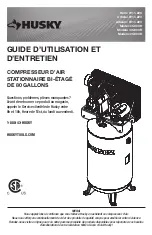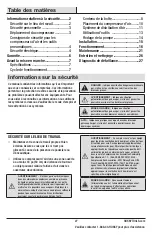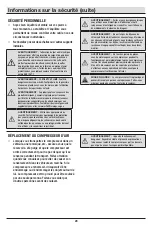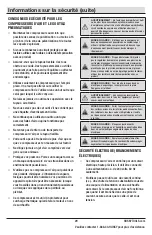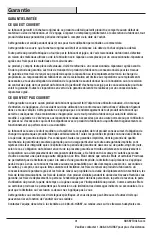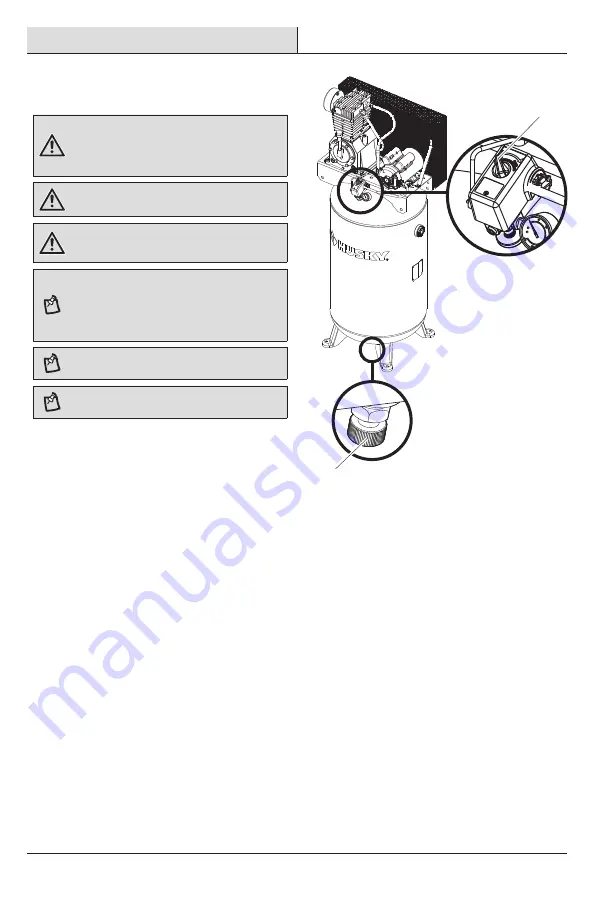
16
Operation (continued)
5
Draining the tank
WARNING:
Risk of unsafe operation. Air tanks contain
high pressure air. Keep face and other body parts away
from outlet of drain. Use eye protection [ANSI Z87.1 (CAN/
CSA Z94.3)] when draining, as debris can be kicked up
into face.
WARNING:
Risk from noise. Use ear protection (ANSI
S12.6 (S3.19), as air flow noise is loud when draining.
WARNING:
Risk of bursting. Water will condense in the
air tank. If not drained, water will corrode and weaken the
air tank causing a risk of air tank rupture.
NOTE:
All compressed air systems generate condensate
that accumulates in any drain point (e.g., tanks, filter,
after-coolers, dryers). This condensate contains lubricating
oil and/or substances which may be regulated and must
be disposed of in accordance with local, state, and federal
laws and regulations.
NOTE:
If drain valve is plugged, release all air pressure.
The valve can then be removed, cleaned, then reinstalled.
NOTE:
Risk of property damage. Drained water from the
air tank may contain oil and rust which can cause stains.
□
Set the AUTO ( I ) / OFF ( O ) switch (1) to the
OFF ( O ) position.
□
Slowly bleed the air from the compressor
tank by pulling the safety valve to allow the
pressure to escape from the tank until the
pressure is approximately 20 psi.
□
Drain the water from the tank by opening the
drain valve (2) on the bottom of the tank.
□
After the water has been drained, close the
drain valve (2).
2
1


